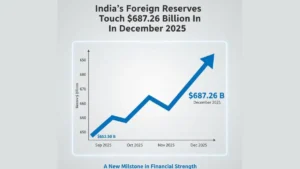India has made significant strides in decoupling economic growth from greenhouse gas emissions, achieving a 36% reduction in GDP emission intensity between 2005 and 2020. This progress aligns with the nation’s climate action targets under the Paris Agreement.
Key Highlights
Total Greenhouse Gas Emissions
In 2020, India’s total greenhouse gas emissions, excluding land use, land-use change, and forestry (LULUCF), were 2,959 million tonnes of carbon dioxide equivalent (MtCO2e). Including LULUCF, emissions stood at 2,437 MtCO2e. This represents a 7.93% decrease compared to 2019 but a 98.34% increase since 1994.
Emission Intensity Reduction
The 36% decline in emission intensity of GDP from 2005 to 2020 indicates India’s success in reducing emissions relative to economic growth. This positions the country on track to meet its Nationally Determined Contribution (NDC) target of a 45% reduction by 2030.
Non-Fossil Fuel Energy Capacity
As of October 2024, non-fossil fuel sources accounted for 46.52% of India’s installed electricity generation capacity. The cumulative renewable power installed capacity, including large hydro projects, reached 203.2 gigawatts (GW). This progress supports India’s NDC goal of achieving 50% cumulative electric power installed capacity from non-fossil fuel-based energy resources by 2030.
Carbon Sink Enhancement
Between 2005 and 2021, India created an additional carbon sink of 2.29 billion tonnes through forest and tree cover, contributing to its commitment of generating an additional carbon sink of 2.5 to 3 billion tonnes by 2030.
Sectoral Emissions Breakdown (2020)
-
- Energy Sector: Contributed 75.66% of total emissions.
- Agriculture: Accounted for 13.72%.
- Industrial Processes and Product Use (IPPU): Made up 8.06%.
- Waste: Comprised 2.56%.
Per Capita Energy Consumption
Despite representing 18% of the global population, India’s annual primary energy consumption per capita in 2022 was 25.4 gigajoules (GJ), significantly lower than the global average of 78 GJ per person. High-income countries averaged 119 GJ per person, with the U.S. at 277 GJ per person. This underscores India’s need to increase energy consumption to meet developmental goals.
These developments were detailed in India’s fourth Biennial Update Report (BUR-4) submitted to the United Nations Framework Convention on Climate Change (UNFCCC) on December 30, 2024. Biennial Update Reports are submitted by developing countries every two years, providing updates on emissions, climate action progress, and needs for support in mitigation and adaptation.
Summary of the news
| Why in News | Key Points |
|---|---|
| India reported a 36% reduction in GDP emission intensity from 2005 to 2020, in line with climate goals under the Paris Agreement. | – GDP Emission Intensity Reduction: 36% from 2005 to 2020. |
| India’s Nationally Determined Contribution (NDC) targets a 45% reduction in GDP emission intensity by 2030. | – 2030 Target: 45% reduction in GDP emission intensity from 2005 levels. |
| India achieved 46.52% of its installed electricity capacity from non-fossil fuel sources by 2024. | – Non-Fossil Fuel Energy Capacity (2024): 46.52% of installed electricity capacity. |
| Total greenhouse gas emissions in 2020 were 2,959 million tonnes (MtCO2e), excluding LULUCF. | – Total Greenhouse Gas Emissions (2020): 2,959 MtCO2e (excluding LULUCF). |
| Carbon sink enhancement between 2005 and 2021 contributed 2.29 billion tonnes through forest and tree cover. | – Carbon Sink (2005-2021): 2.29 billion tonnes through forest and tree cover. |
| India’s per capita energy consumption in 2022 was 25.4 GJ, significantly lower than the global average of 78 GJ. | – Per Capita Energy Consumption (2022): 25.4 GJ, much lower than the global average of 78 GJ per person. |
| Biennial Update Report (BUR-4) was submitted to the UNFCCC in December 2024, outlining emissions, climate action, and mitigation progress. | – BUR-4 Submission: Submitted in December 2024 to the UNFCCC, detailing emissions, climate action, and progress. |
| Major Sectors Contributing to Emissions (2020): Energy (75.66%), Agriculture (13.72%), IPPU (8.06%), Waste (2.56%). | – Sectoral Emissions Breakdown (2020): Energy: 75.66%, Agriculture: 13.72%, IPPU: 8.06%, Waste: 2.56%. |
| India’s total emissions, including LULUCF, stood at 2,437 million tonnes (MtCO2e) in 2020. | – Total Emissions Including LULUCF (2020): 2,437 MtCO2e. |



 Retail Inflation Rises Slightly to 0.71%...
Retail Inflation Rises Slightly to 0.71%...
 India’s Foreign Reserves Touch $687.26 B...
India’s Foreign Reserves Touch $687.26 B...
 ADB Raises India’s Growth Forecast to 7....
ADB Raises India’s Growth Forecast to 7....







